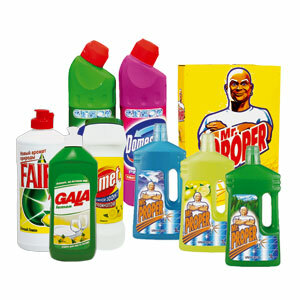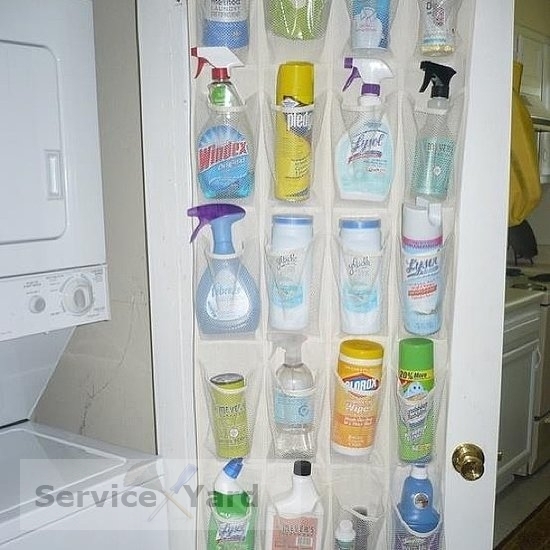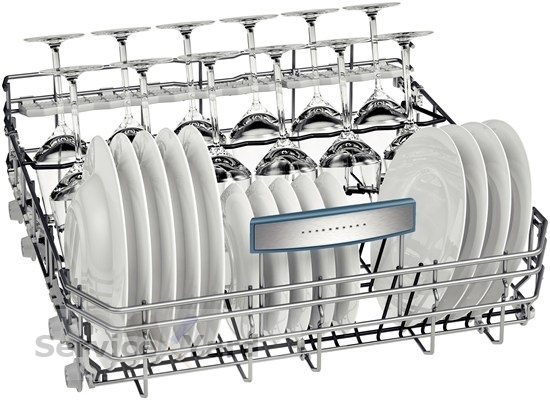
- What tools are needed for the dishwasher?
- Detergents for dishwashers
- Rinse aid for dishwasher
- Water softener
- Useful advices:
The dishwasher saves time and physical efforts of housewives when washing dishes, but both the car does not work without gasoline, and the dishwasher is useless without detergents, regeneration saltand rinse aid. In order for an automatic dishwashing machine to last a long time, it is necessary not only to correctly use the machine, but also to correctly select and use the dishwasher detergent.
to the contents ↑What tools are needed for the dishwasher?
All dishwashing detergents perform one single function: wash the utensils well of food debris and remove all impurities. The best and most effective result of dishwashing will be in case you use all the necessary detergents in the complex. They are divided into 3 main types:
- Detergent for removing contaminants.
- Salt for softening water.
- Rinse aid( to prevent stains and stains on the dishes when washing).
Important! Means for hand washing dishes, as well as ordinary soap and powder should never be used in a dishwasher, since they are more foaming and will simply pour out of the machine.
 By type of performance, detergents for the dishwasher are divided into:
By type of performance, detergents for the dishwasher are divided into:
- Powders.
- Tablets.
What means to use - it all depends on your preferences and experience of application. When choosing a dishwasher, be sure to ask the sales consultants which types of detergents can be loaded into the equipment.
Consider the advantages and advantages of tablets and powders.
Powder
Powder is the most affordable and popular detergent. For 1 wash cycle, an average of about 25-30 g of powder is consumed. If you buy 1 kg of products, then it will last for 35-40 cycles. A measuring spoon is supplied with the package to determine the required amount of powder. Sometimes the packaging indicates the volume of the container lid, which can also be used as a measuring container.
Tablets
These products are more convenient to use, as it can not be accidentally spilled during loading. Tablets can be:
- Single-layer( standard).
- Multilayered.
- Multilayer combined( 3 in 1).
Applying multi-layer combined tablets, you simultaneously load in a dishwasher:
- Detergent components.
- Water softeners replacing the regenerating salt.
- Rinsing agent.
Many models of modern dishwashers allow the use of combined tablets, but to verify this, check with the instructions of the machine.
Important! Manufacturers do not recommend the use of combined products in regions where water is very hard or very soft.
Different types of tablets differ and the dissolution rate of the layers varies. The dosage of detergent in tablets depends on the volume of the dishwasher and is indicated in the technical characteristics of the device. The usual expense is 1 tablet per cycle. If the water is very hard, then the initial dosage should be increased by 1 tablet.
Important! Disadvantages of tablets:
- Detergents for dishwashers in tablets, in terms of 1 wash cycle, are slightly more expensive than the agents in the powder.
- Tablets for short programs do not have time to dissolve. Producers of dishwashers recommend using programs in tablets to choose programs of normal duration.
Detergents for dishwashers
There are other distinguishing criteria for the types of detergents for dishwashers. These include the following.
Degree of aggressiveness
 According to the degree of influence on the dishes, the means for dishwashers are conventionally divided into 2 groups:
According to the degree of influence on the dishes, the means for dishwashers are conventionally divided into 2 groups:
- Strongly alkaline. This product in its composition has caustic alkaline components, such as phosphates, sodium carbonates, silicates, chemical brighteners based on chlorine or oxygen. These drugs are designed to destroy fat and protein contaminants.
- Weak-alkaline detergents. The composition of this product, as a rule, includes enzymes. If the detergent instructions indicate the presence of enzymes, then such a cleaner is optimal for washing kitchen utensils at a water temperature of 45-50 C. It is with this mode that ideal conditions for effective manifestation of the properties of enzymes are created.
Important! Biological enzyme additives( enzymes) break down proteins, fats and polysaccharides. The use of enzyme additives facilitates the removal of contaminants based on oils and fats. It is insoluble proteins, fats and oils that are "eaten" into the dishes, if several hours have passed after using the utensils. The use of detergents with enzymes in this case will significantly improve the efficiency of washing.
Chemical Composition
By chemical composition, detergents are divided into 3 main types:
- Containing alkaline components and an oxidizing component based on chlorine. They perfectly handle pollution of any type: traces of tea, coffee and red wine, but being quite caustic, they can change the color of dishes made of synthetic materials. Also, this product is not recommended for washing brittle, thin, metallic( aluminum), silver dishes. For this type of utensils, choose a more gentle, gentle remedy.
- Containing alkaline components and an oxidizer based on oxygen. The second group of products is characterized by a softer bleaching effect, so they are used for most types of dishes. Detergents containing enzymes and alkaline components, but not having oxidizing components, have a high-quality detergent effect at low temperatures. This product takes care of the dishes and acts sparingly on it.
- Containing alkaline components, but not containing oxidizing components. In addition to synthetic detergents for dishwashers in the market of household chemicals, products from natural raw materials appeared, which completely decomposes during washing. Such funds do not contain in the composition of aggressive components: phosphates, chlorine, synthetic preservatives, dyes. Instead, they include active natural components and oxygen. Cleaning utensils is due to oxygen and natural active ingredients. These products are good at various pollution, even at low temperatures, in addition, are environmentally safe - both for nature and for human health.
Important! When choosing a detergent, carefully study its composition, and do not forget to clarify what type of dish is suitable for washing. If there are no special marks, do not use this product for brittle crystal and silver. For such dishes, select the means for dishwashers, on the packaging of which this possibility will be stipulated.
Special conditions for use of dishwasher detergents
Some dishes require extremely careful handling. To such utensils is:
- Earthenware.
- Aluminum objects - this alloy dissolves under the influence of oxidants and alkalis).
- Utensils with overglaze painting - may fade, lose color and even disappear).
- Glassware, if there is no symbol on it that allows washing in a dishwasher - otherwise the glass will become cloudy.
Important! Some types of utensils can be washed in a dishwasher only in a gentle mode. For this type of cookware, choose a delicate program with the lowest temperature and cycle time, and at the end of the washing, remove this dish from the machine as soon as possible. The detergent dose for dishwashers is recommended to be reduced by 1.5 times. For example, to this type of utensils are cups and plates with pictures and glaze.
to the table of contents ↑Rinse aid for the dishwasher
 To completely remove the detergent residues and make the dishes shine, manufacturers recommend adding a special liquid rinse aid to the dishwasher. Its distinctive features are as follows:
To completely remove the detergent residues and make the dishes shine, manufacturers recommend adding a special liquid rinse aid to the dishwasher. Its distinctive features are as follows:
- This composition includes non-ionic surfactants that effectively moisten the surface of dishes and accelerate the flow of water. As a result, this leads to rapid drying and the absence of stains and stains on the surface of the utensils.
- Acids( for example, citric), which are part of the rinse, remove and neutralize the alkaline components of the detergent used.
- On average, a rinse aid with a volume of 0.5-0.7 liters is sufficient for 10-12 washing cycles( for a cycle of 3-5 ml).
- Very effectively, the conditioner works on glassware. Due to fast drying, the glass does not fade, but remains the same transparent.
- Rinse aid is completely rinsed during the cycle and does not pose a health hazard.
Important! If allergy sufferers are present in the family, we recommend that after washing, start the dishwasher again and select a rinse cycle to finally get rid of any chemical components.
to the contents ↑water softener To obtain a high-quality result when washing dishes, it is necessary to use only soft water, that is, water with a low lime content. Otherwise - a white precipitate appears on the dishes, as well as the internal surface of the dishwasher. Information on the level of water hardness in the tap can be obtained at the waterworks.
Important! Some manufacturers of dishwashers in the kit supply a tester to determine the level of water hardness. This allows you not only to clarify the quality of your water in the faucet, but also to choose the ideal detergent for the dishwasher.
In areas where water is so soft, softening salt is not necessary, however, in areas where water is very hard, salt is simply necessary. It will not only help to reduce the hardness of water, and therefore - improve the quality of washing, but also extend the life of the dishwasher itself.
In most dishwashers, the capacity for the regenerating salt is quite voluminous, so you can load 1-2 kg of the product at once. Once the salt is finished, the indicator on the control panel lights up. If the water softener is over, and there is nothing to add, then use ordinary table salt, but remember that the salt should be large and very clean.
Important! The quality of salt can be checked by dissolving a teaspoon of a substance in a glass of water. If the water becomes turbid, then such cooking salt in the machine can not be added.
to the table of contents ↑Useful advices:
- Before you place the dishes in the machine, rinse the remainder of food with a strong stream of water.
- When choosing standard or combined means for dishwashers, remember that:
- in the first case you can regulate the flow of funds, depending on the contamination and specific washing conditions;
- in the second - you will constantly spend an "average" dose means, which means you can not save the detergent.
- Be sure to use the cleaning agent for the dishwasher itself. Acquire:
- Degreaser is a remover for removing fat from the inside of the machine( sold as a granular powder or gel).Degrease the degreaser or pour into the same compartment, where the detergent for dishwashers is laid. Use degreaser is necessary after 15-20 operating cycles of the machine.
- Antinakipine - use for prophylaxis: pour the powder into the box and turn on the program with a temperature of 40-45 C, without pre-rinsing. Use a descaling agent 2-4 times a year, depending on the hardness of the water. The best result is achieved if you apply antikonakin after degreaser. Deodorant or freshener. When washing dishes on the surface of the machine, not only fat accumulates, but in parts such as a filter and a drain, even pieces of food can remain. As a result, unpleasant smells appear in the car. The deodorant will eliminate the problem and give a freshly washed dish a light citrus or floral scent.
Important! Detailed instructions for the use of deodorant, degreaser, antiscale are always contained on the package. Before using the tools, be sure to study them.
According to experts, dishwasher detergents do not cause harm to human health. Even strongly alkaline products do not come into contact with human hands, so there is no danger to health and skin. Therefore, use the dishwasher for good health. Let the dirty work of your "home assistant", and spend your free time on family or your favorite hobby.



